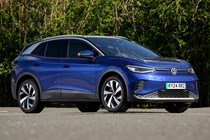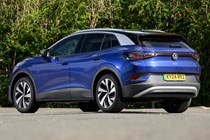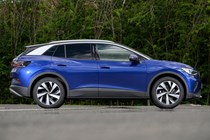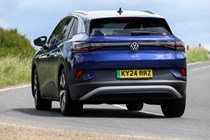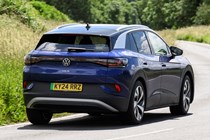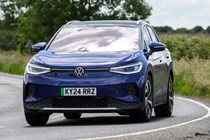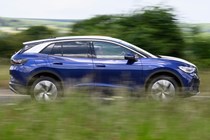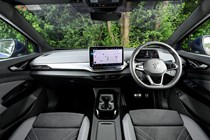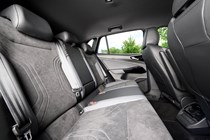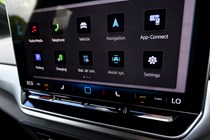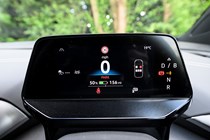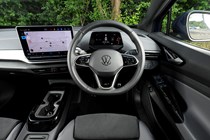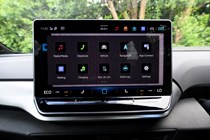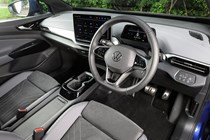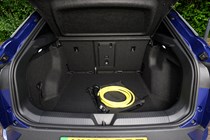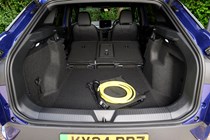
Volkswagen ID.4 long-term test
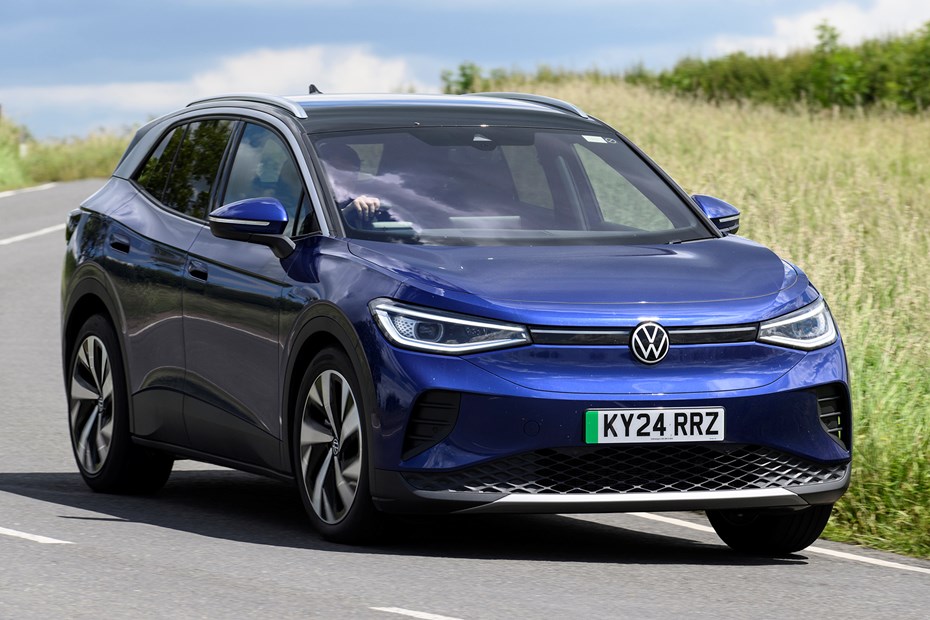
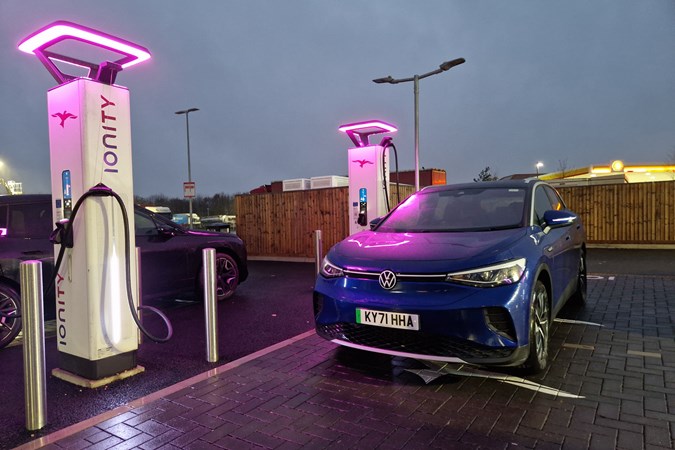
To find out what the VW ID.4 is like to live with, cj hubbard tested one for two months. Here’s how he got on.
Living with the Volkswagen ID.4
We’ve had the opportunity to spend a few weeks driving an ID.4 – rather than the usual few days – so on this page we’re sharing our impressions on what it is like to live with Volkswagen’s dedicated electric SUV longer-term. While we haven’t spent months at the wheel in this car as we are able to do with others, the experience has also given us a few insights into what it’s like to deal with an EV as 2022 draws to a close.
As such, I’ve consciously chosen to rely not on the electric car charger I have at home, but the public charging network (including the charging facility we’re lucky to have at the office), in order to see how easy it is to cope without a wallbox at this moment in time. This decision reflects the general increase in electric car interest among buyers; not everyone has, or can have, a charger at home, so is it possible to live with an EV without one?
First impressions first
The ID.4 we’ve been testing was in the entry-level Life trim level but fitted with the bigger 77kWh battery pack and the mid-level 204hp single electric motor of the Pro Performance drivetrain. At £44,480 on the road – and £47,595 with options as tested – it’s towards the lower end of what you can spend on one of these.
That option spend went primarily on cosmetic items, upgrading the car from 19-inch steel wheels to 19-inch alloys, adding the bi-colour style pack (though the black roof was a little lost over the also extra cost Blue Dusk metallic paint) and raising the interior ambience with large expanses of Florence Brown over Soul Black. However, in addition to all this a more energy efficient heat pump heating system had also been added.
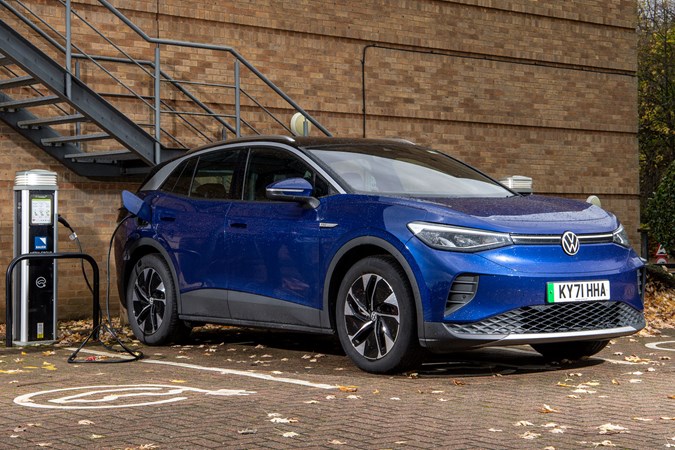
Some of my colleagues are a little down on the ID range in general, particularly once they start to get expensive. But while I’d never driven an ID.4 before, I have always rather liked the ID.3. So I was approaching this with an open mind but relatively low expectations. Which my first impressions comfortably exceeded.
To my eyes at least, the ID.4 is an attractive, tightly proportioned SUV that gently advertises its alternative-energy power source, rather than shouting about it or pretending to be something it isn’t. Similarly, I like the simple, modern interior layout – though the lack of physical buttons we’ll come back to – and the Florence Brown elements definitely lift this beyond any kind of boring norm to deliver a degree of ambient plushness.
Admittedly, not all of the plastics live up to this. But overall I’ve found it a pleasant place to pass the miles, the driving environment proving both relaxing and easy enough to get to grips with. The barely functional built-in sat-nav is a glaring exception to this, but once I’d figured out the wireless Android Auto this became a moot point.
What is the ID.4 like to live with then?
Day-to-day, it’s largely been brilliant. There is something undeniably conscience-easing about pottering about the place in an electric vehicle, especially in Cambridge, among all the cyclists and electric scooters. I do a lot of short urban journeys ferrying the kiddo around, and not having to fire up a combustion engine – particularly on trips so short they never even get through the warm-up phase – has been wonderful. But that, of course, is a plus point you can apply to almost any EV.
More specifically, I’ve been pleasantly surprised at how spacious the ID.4 is. There is a lot of legroom in the back, and plenty of space for my four-year-old’s chunky child seat. She was even more delighted by the additional Isofix mounting points on the front passenger seat, which meant she could safely travel up front with me when it was just the two of us in the car.
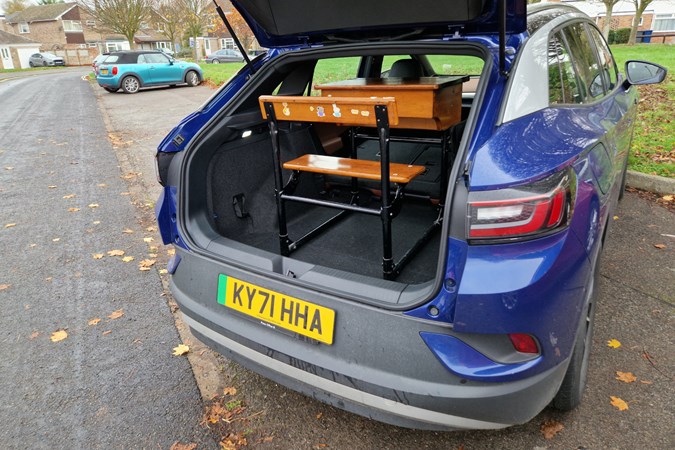
An extension of this spaciousness is the ID.4’s unexpectedly vast boot, which is deep and square and very accommodating of a variety of Ikea packaging (both empty and full, the car’s time with me having coincided with a mass of wardrobe assembly ahead of a second child’s arrival). The official figure is 543 litres with the rear seats in place – it seems bigger – and 1,575 litres with them folded, though in that position there’s a lip to contend with as the seat backs do not fold flush with the boot floor. Got to make space somewhere for that battery pack.
On the negative side, the depth of floor created by the need to accommodate that pack means the ID.4’s step-in height is higher than perhaps expected. This makes it strangely awkward to get in and out of until you’re used to it – my heavily pregnant wife would have struggled less with a more conventional car in this regard.
I, meanwhile, found the ID.4 an occasionally awkward thing to see out of. A high window line and the position of the windscreen pillars being a combination I never quite got used to, resulting in steering corrections on the road and a lot of double-checking when parking. No reversing camera on this example, but front and rear sensors managed to keep me from accidentally remodelling it in these situations.
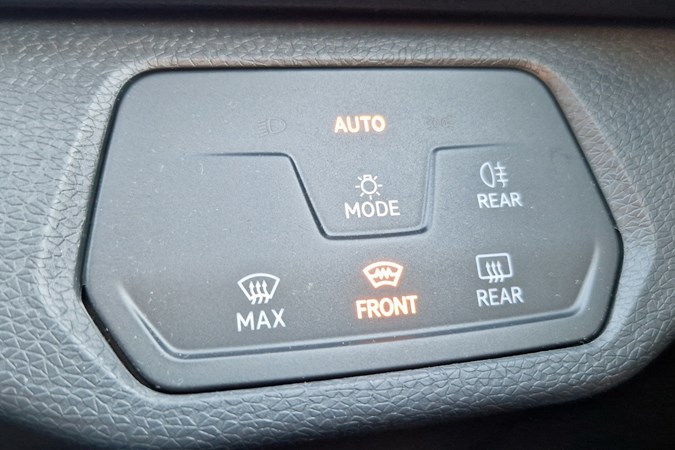
Other issues here were really spec related. The lack of keyless entry was an annoyance spending more money would solve, ditto the non-powered bootlid and unheated door mirrors. Having a light-up button for a heated screen when there wasn’t one seemed a bit sad, though – VW penny-pinching to fit the same control panel in every model.
I do really like not having to turn the ignition on or off, though. In the ID.4, as with some other electric cars, you simply have to sit down and select forward or reverse to go. Press Park when you’re done. Get out and lock. I’ve been struggling with normal cars since.
How difficult was it to keep charged?
Couple of things to consider here – the planning required ahead of longer journeys and the reality of the ID.4’s driving range in colder weather.
My commute to work is almost entirely fast dual-carriageway and motorway, which doesn’t suit EVs very well. They prefer the stop and start of urban and b-road traffic, as this helps keep the battery topped up. This in combination with the increasingly colder weather – no EV likes the cold – saw the theoretical real-world range drop from around 260 miles when the ID.4 arrived to around 220 miles after a few weeks of my custodianship.
A far cry from the WLTP claim of 328 miles. But not actually problematic for my routine. The journey to work is 36 miles, which the ID.4 would easily cover many times between charges, and I have access to charge points at the office.
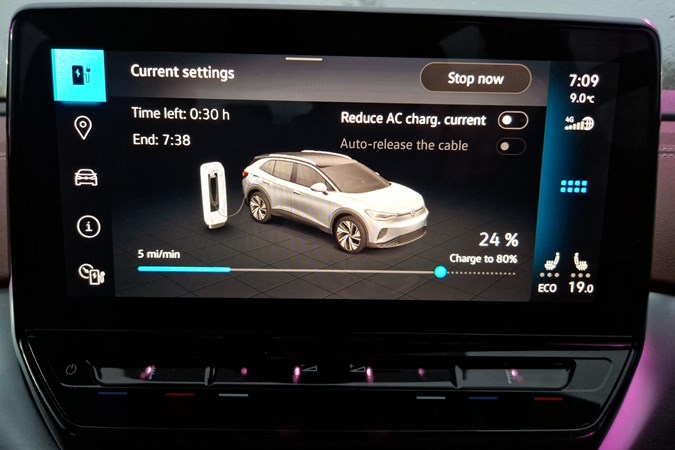
Journeys outside of this routine required a little more thinking ahead. Given I figured it best to try and avoid stopping for 40 minutes to charge while travelling with the tiny terror, this often meant making a dedicated trip to charge the car at Cambridge Services ahead of time.
This was easy enough for me to do, thanks to 350kW Ionity chargers and available moments in the sprog’s schedule – Saturday mornings while she was at Theatre Train being a prime opportunity – but I realise that not everyone will have this flexibility. Running an electric car without a home charger will definitely involve some sacrifice to your personal time; the ID.4 maxes at a charging speed of 125kWh, so you’ll need a full hour for a full charge if you’re running particularly low.
What’s it like to drive?
Rapid enough out of the box that I rarely felt the need to venture out of the standard Comfort drive mode into Sport. It’s also quiet at speed and accelerates very smoothly. With no gears to worry about, the instant torque delivers entirely predictable responses, which takes all of the uncertainty out of judging gaps in traffic. Returning to conventional cars with conventional transmissions could understandably be judged as a backwards step, by comparison.
Does this undemanding nature also make the ID.4 boring? It’s no performance car, but then, it isn’t claiming to be. While the steering is fairly numb, there’s plenty of grip, and body movements are well controlled unless you’re really throwing it about – in which instance see the earlier point about it not claiming to be a sports car.
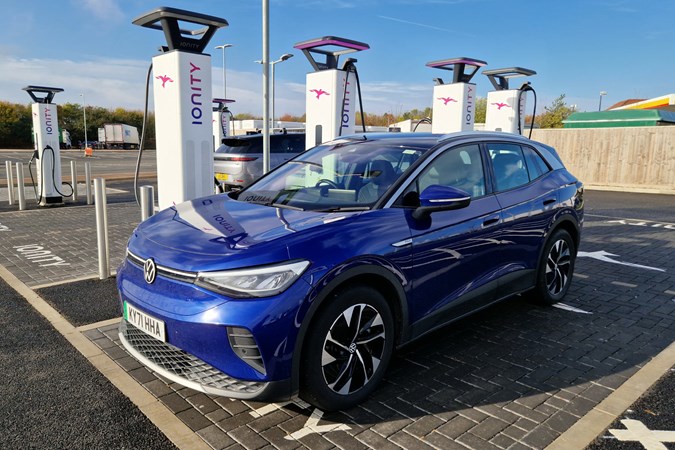
I wouldn’t expect to find myself burning to take this thing out for an early Sunday-morning blast, but I’d probably get at least some satisfaction from doing so. I found the curious ‘organ’ noises – as a mate put it – the ID.4 makes as a pedestrian warning at low speeds rather endearing, and I appreciated the unruffled, high-speed refinement on the motorway.
The suspension could be more comfortable. But it’s not actually annoying, and I suspect the 19-inch wheels are the main pain factor here. Given the state of most British roads, the ID.4 acquitted itself well in this respect. Winces were induced, but only rarely.
How bad is the infotainment, really?
It’s bad enough that VW’s latest boss is now acknowledging the misstep, and all the spyshots we’ve seen of facelifted Volkswagens recently have shown the re-emergence of proper buttons in place of the touch-sensitive surfaces the current crop of cars are burdened with.
For the most part, you do get used to all this – although the lack of illumination for the temperature panel does seem particularly stupid (you can access these controls via the main touchscreen in a pinch, but still).
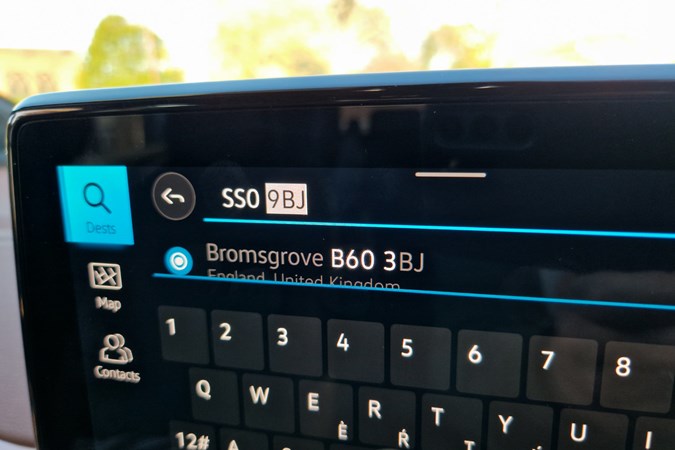
The satellite-navigation, however, I gave up with early on. After it refused to accept the postcode or street name for a destination, then wouldn’t recognise the adjacent streets either – and this was not a new development. Very poor. And if user error, such a fundamental one that it shouldn’t be possible.
Fortunately, the wireless Android Auto works just fine. Even if the charging pad had a 50-50 relationship with the case on my phone (sometimes it would charge, sometimes it wouldn’t).
So, would you buy one?
The ID.4 is a perfectly pleasant, perfectly capable electric SUV. Nothing went wrong with it – save a few times the forward sensors pack cried uncle due to an obstruction of some kind, soon cleared – and I found it very easy to live with.
I like the way it looks inside and out – to the point I can’t quite understand the need for an ID.5 – but I realise that’s a personal preference. I found the driving experience entirely acceptable, the space inside more than generous, and the driving range per charge together with the time it took to replenish completely tolerable.
That might sound like a whole load of mediocre. But in a way this is the ID.4’s genius. It is inoffensively able and a comfortable introduction to a potentially new mode of travel, delivering electric motivation in a manner that will make it agreeable to a wide range of people. I’d have happily spent far, far more time with it.



